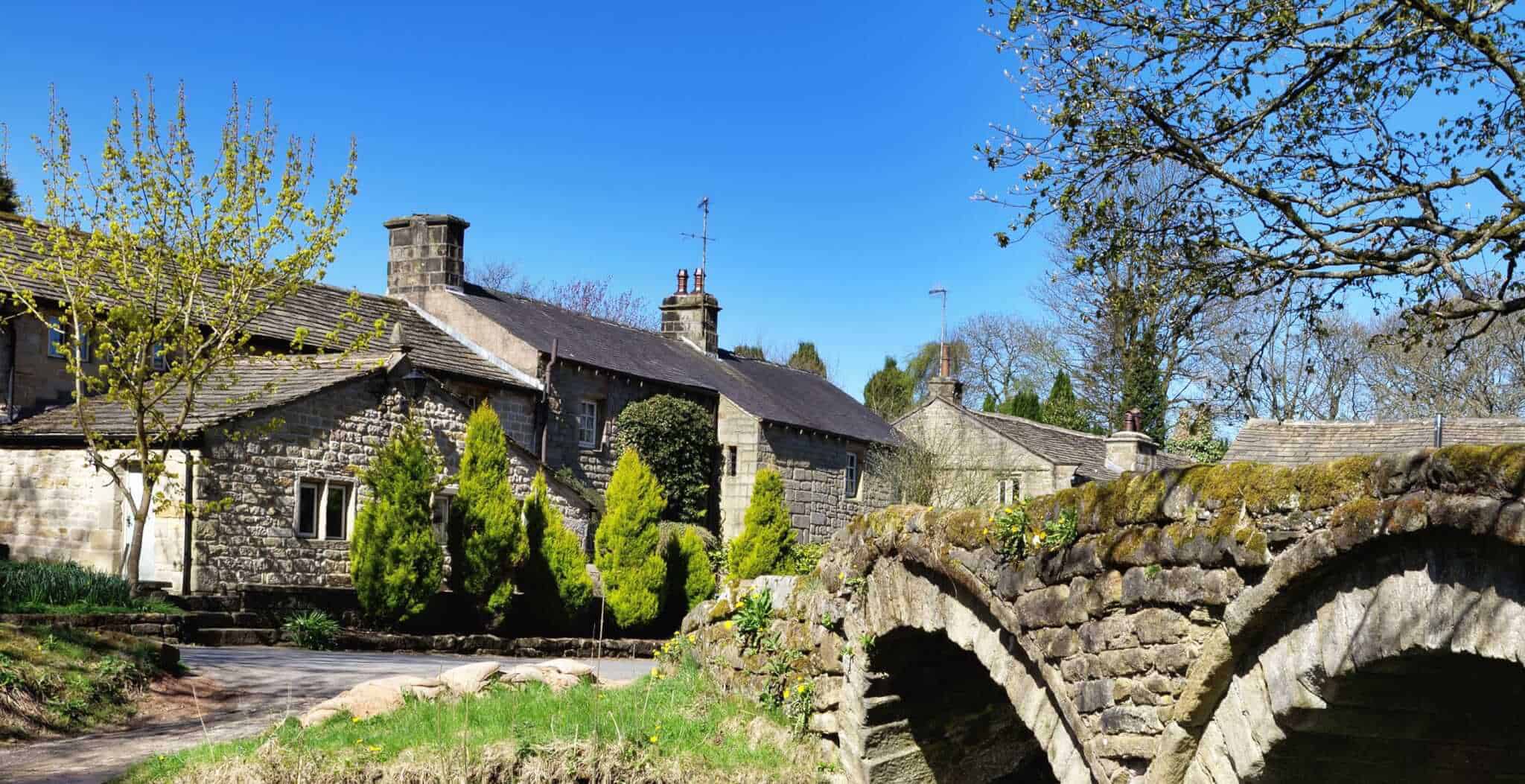The pretty hamlet of Wycoller lies 4 miles east of Colne in Lancashire. This sleepy village now forms part of a beautiful country park.
Wycoller is probably most famous for its Bronte connection. Today Wycoller Hall stands in ruins but this 16th century hall is believed to have been the inspiration for Ferndean Manor in Charlotte Bronte’s novel, ‘Jane Eyre’. The Brontes lived at Haworth, not far from Wycoller, and Charlotte would have passed through here on her way to Gawthorpe Hall when she went to stay with the Kay-Shuttleworths. Charlotte’s description of Ferndean Manor when approached from the old coach road fits Wycoller Hall perfectly.
Originally owned by the Hartley family, the hall was extended in the late 18th century by its last owner, Squire Cunliffe. A keen gambler, Cunliffe also borrowed money against Wycoller Hall to fund the building work. He died heavily in debt in 1818. After his death, stones from the Hall were plundered to build nearby houses and other structures. The hall subsequently fell into ruin.

The atmospheric ruins of the hall lie by Wycoller Beck which flows through the village. The beck is crossed by no less than seven bridges, the oldest of which is Clam Bridge. Possibly more than 1000 years old, the bridge is listed as an Ancient Monument. It is a simple bridge, just a single slab laid across the beck. It may also have once had a handrail.
Close to the ruins of Wycoller Hall is the late 18th / early 19th century Clapper Bridge. Grooves in the bridge formed by the weavers’ clogs were apparently chiselled flat by a farmer whose daughter fell and was fatally injured on the bridge.
The 15th century Pack-Horse Bridge (below, behind Clapper Bridge) is a substantial twin arched bridge. It is also sometimes referred to as Sally’s Bridge after Sally Owen, mother of Wycoller’s last squire.

Fans of the film, ‘The Railway Children’ starring Jenny Agutter may recognise this bridge. In a sequence from the film, Bobbie (Jenny Agutter) is seen sitting on the bridge, talking to Dr Forrest who is driving his pony and trap through the ford.
Finds of flint tools and axe heads at Wycoller indicate that there was a community here from as early as the Stone Age. A small sheep farming community in the 17th century, by the late 18th century the village was booming. Weaving had come to Wycoller. Weaving with a hand loom was now the main occupation of the vast majority of households in the village. However this period of relative affluence was not to last.
The invention of power looms in the 19th century led to the village’s decline. Weavers had to move to nearby towns to find work in the developing mills. Over 35 houses were abandoned and fell into ruin. By 1896 the majority of people had moved away from the village and it was virtually deserted.
Now a country park, visitors can stroll through the picturesque village with its remaining cottages, beck and ruined hall. There is a Craft Centre with Victorian tearoom and gift shop in the village.







